Picnic Tables
All new picnic table installations must comply with requirements for accessible seating spaces, table clearance, slope, and surface. This is true whether the table is in a campground, picnic area, or other recreation site. "Recreation Site Layout" explains how the tables in each of these types of recreation sites must be connected to the other major constructed features at the recreation area. If the picnic tables are provided on trails, ensure the routes connecting them to any other major constructed features in the area comply with the technical requirements for trails.
The number of wheelchair seating spaces that must be provided at each table is based on the length of the picnic table (figure 78). Always ensure at least one wheelchair seating space. For larger tables, one wheelchair seating space is required for each 24 linear feet (7.32 meters) of usable space around the perimeter of the table. Practically speaking, tables up to 9 feet (2.74 meters) long usually require one space. Tables between 10 feet (3.05 meters) and 20 feet (6 meters) long usually require two wheelchair spaces, and so on for longer tables, such as four spaces for tables that are 40 feet (12 meters) long.
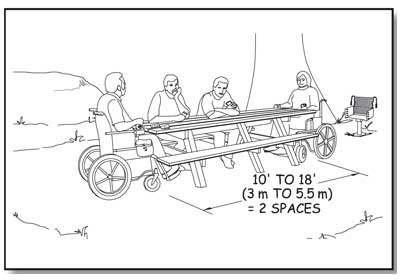
Figure 78—At least two spaces must be accessible at a 10- to 18-foot (3- to 5.5-meter) -long picnic table.
Knee space for wheelchair seating must be at least 30 inches (760 millimeters) wide, 19 inches (485 millimeters) deep, and 27 inches (685 millimeters) high, as measured from the ground or floor to the bottom of the tabletop. Toe clearance of at least 9 inches (230 millimeters) above the ground or floor must extend at least an additional 5 inches (25 millimeters) beyond the required knee clearance. Figure 79 illustrates the required knee and toe space. Toe clearance is required to ensure that someone in a wheelchair is able to sit close to the tabletop, regardless of the design of the picnic table. If the table is constructed with one solid leg on each end, as opposed to an A-shaped frame or two individual legs on each end of the table that would allow the wheelchair to fit in between, the toes of a person in a wheelchair would hit the table leg at the end of the 19-inch (485-millimeter) knee space. Without additional toe clearance, a person in a wheelchair wouldn't be able to get close enough to the tabletop to use it comfortably.
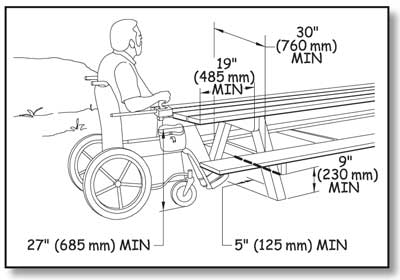
Figure 79—The requirements for knee and toe space at a picnic table.
Construction Tip
Ensure picnic tables are accessible.
Manufacturers often claim their tables are accessible even though they don't meet accessibility requirements. Check the dimensions to verify whether a table is accessible.
Provide clear floor or ground space that is 30 inches by 48 inches (760 millimeters by 1,220 millimeters) at each wheelchair seating space, positioned to accommodate a forward approach to the table (figure 80). No exceptions to the wheelchair seating space requirements are permitted.
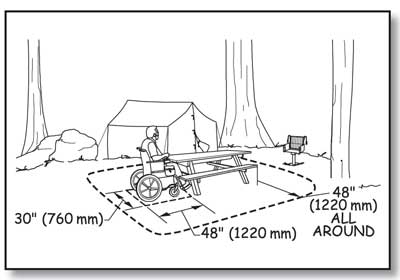
Figure 80—The requirements for clear space at a picnic table.
In addition to the clear floor or ground space for each wheelchair seating space, provide a 48-inch (1,220-millimeter) clear floor or ground space around the usable portions of the table (see figure 82). Measure table clearance from the table seat out. You may reduce the table clear space to 36 inches (915 millimeters) if there is a condition for an exception.
The slope of the required clear floor or ground space for wheelchair seating spaces and for table clearance is not allowed to exceed 1:48 (2 percent) in any direction. Slopes not steeper than 1:33 (3 percent) are permitted, however, where necessary for drainage on surfaces that are unpaved or not built with boards. The surface of the clear floor or ground space must be firm and stable. The type of surfacing used should be appropriate to the setting and level of development.
Design Tip
Design for appropriate picnic table height.
There is no height requirement in Forest Service Outdoor Recreation Accessibility Guidelines for the table top surface of a picnic table or the top of the table benches. Architectural Barriers Act Accessibility Standards require that tops of dining surfaces be 28 inches (710 millimeters) to 34 inches (865 millimeters) above the finished floor or ground. Table tops may be constructed of a number of different materials, and some of them, such as heavy timbers, may be quite thick. The knee space for wheelchair seating at a picnic table must be at least 27 inches (685 millimeters) high. User comfort is important. Generally, benches that are around 18 inches (457 millimeters) above the ground with table top surfaces that are about 32 inches (813 millimeters) above the ground are reasonably comfortable for most people, accommodate common picnic table construction materials, and meet accessibility requirements.
If a condition for exception in an alteration project at an existing site prohibits full compliance with a specific requirement for clear floor or ground space (surface, slope, size, or location), the clear floor or ground space only has to comply with requirements to the extent practicable.
Design Tip
Use different clear spaces for forward and parallel approaches.
A forward approach means that the person is facing the object (see figure 50). A parallel approach means that the person is beside the object (see figure 51). People need different-sized spaces to position their wheelchairs in front of an object and beside an object. That is why there are different clear floor or ground space requirements for forward and parallel approaches.
Design Tip
Use the picnic tables recreationists prefer.
The most popular accessible picnic tables look like ordinary 8-foot-long tables, but the legs are located slightly closer to the center of the table so that they meet wheelchair seating requirements at both ends. The benches are the same length as the tabletop (figure 81). The benches that extend the same length as the table top provide a seat at each corner beyond the table leg. The four corner seats are prized by individuals who may have difficulty stepping over the bench to be seated. At the corner seats, a person simply slides in. Figures 82, 83, and 84 show some examples of accessible tables that can be built by contractors or Forest Service crews. The tables can be locally constructed using the plans available at http://www.fs.fed.us/recreation/programs/accessibility and also available to Forest Service employees at http://fsweb.wo.fs.fed.us/eng/facilities/accrec/tables/. Use the links to view the tables or to save AutoCAD drawings of the tables.
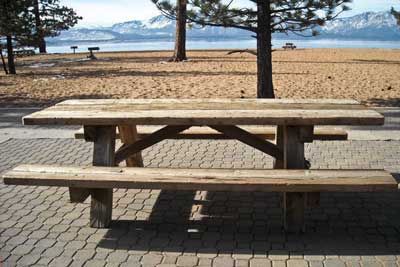
Figure 81—This picnic table at Nevada Beach day use area in the Lake Tahoe Basin Management Unit is a popular design that allows people who use wheelchairs to use either end without the appearance of "separate" space. A Forest Service shield is routed into the cross piece on each end, adding to the design appeal.
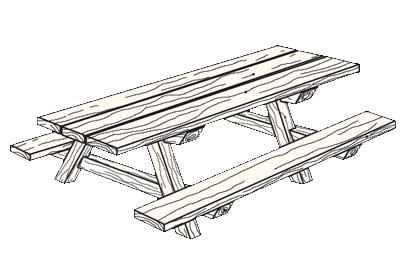
Figure 82—An accessible wood picnic table.
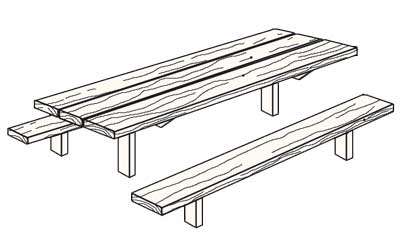
Figure 83—An accessible steel leg picnic table.
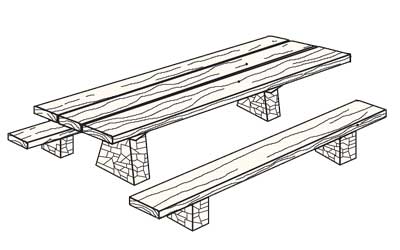
Figure 84—An accessible stone leg picnic table.

User Comments/Questions
Add Comment/Question